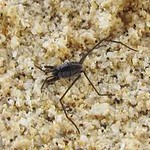|
MATERIALS NEWS
Marine species burgeoning through plastics

Plastics may be a boon or a bane – whichever way you look at it! A new study in the US shows that the concentration of plastic has increased by 100 times over the past 40 years in the North Pacific Subtropical Gyre, to more than 18 million sq m. With this is also a rise in the eggs of a particular sea living insect.
The study by researchers at the Scripps Institution of Oceanography, published in Biology Letters, documents the increase in Halobates sericeus, a water strider that lays its eggs on floating objects. The team collected and analysed data on bits of plastic less than 5 mm across in the North Pacific Ocean, including records from two recent voyages, published data from other sources and data developed from archived samples in the Scripps collection taken in the early 1970s.
Higher concentrations of floating plastic debris offer more opportunities for the pelagic strider to lay eggs. This marine insect—closely related to pond striders—spends its entire life out on the open ocean and takes its place in the food web by consuming zooplankton and larval fish and being eaten by crabs, fish and seabirds.
The floating plastic pieces are more common and offer a surface on which striders can lay their eggs. Although researchers found an increase in eggs, they did not find an increase in the insects themselves. That could be because there were not enough samples from the early 1970s with which to adequately compare them, but equally likely crabs or small surface-feeding fish may be eating the eggs.
|